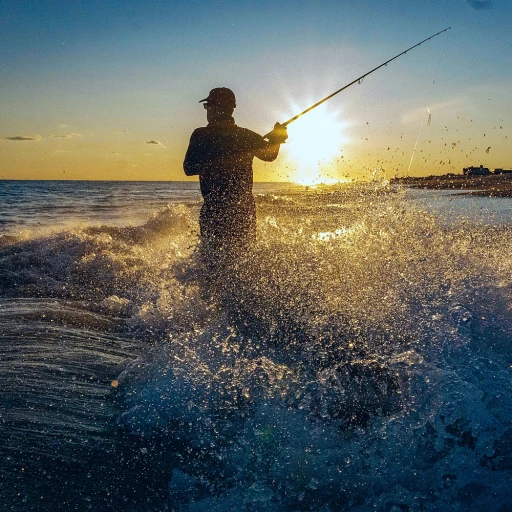Understanding crappie behavior
Spotting and understanding their habits
Crappies are sneaky little fellas, often schooling up in clear water areas that offer plenty of cover like submerged trees, brush piles, and weed beds. It's pretty fascinating; they have this kind of ninja-like camouflage that makes them blend into their surroundings. Tennessee Wildlife Resources Agency reports that crappies thrive in large, slow-moving, or still bodies of water with plenty of cover. Their behavior is highly influenced by the time year, water temperature, and light conditions.During the spring and early summer, crappies move to shallow waters to spawn. If you're angling around these times, it's like hitting a goldmine. The U.S Fish and Wildlife Service has documented that crappies spawn when water temperatures hit around 60-68°F. They make their nests with plants and gravel, so it’s prime time to snag a bite using your best live bait or a nifty jig.
But here’s a tip from seasoned anglers like Kyle Cortiana, a Bass Pro Shops pro: during the post-spawn period and into summer, crappies will move towards deeper waters or around drop-offs. They're searching for cooler spots with less light. Your fishing tackle of choice should reflect this, targeting specific depths can really up your chances.
Crappies go nocturnal
Here's an interesting tidbit: crappies are more active during low-light periods, like dawn or dusk. According to an insightful report by the Missouri Department of Conservation, this is because their eyes are specially adapted for low-light conditions. It’s the same reason why nighttime can be excellent for catching crappie. Flashy lures can imitate the subtle light flashes of small fish like threadfin shad, drawing crappies right in. So, if you're willing to burn the midnight oil, you could be in for a big bite.Weather and seasonal aspects
Temperature changes also play a huge role in crappie activity. When summer heat makes the water toasty, crappies slow down and you'll often find them deeper. Minnesota DNR guides recommend using a depth finder or the more advanced forward facing sonar to locate where they’re hanging out. Pro anglers like those competing in the Toyota Series Northern Series swear by these gadgets, as they offer a real-time look at fish, making it easier to target your next catch.When fall rolls around, crappies become more active again, feeding aggressively to bulk up for the cooler months. Environments such as those found in Wisconsin’s numerous lakes make excellent fishing grounds during these times. By winter, the ice fishing season kicks in, and crappies still bite but at a slower rate. The ice fishing lures you use must be subtle, often small jigs with a minnow or soft plastics are the go-to.
Top live baits for crappie fishing
Top live baits to reel in crappie
When it comes to crappie fishing, live bait often proves to be a fisherman's best friend. If you are serious about catching these fish, stocking up on the best crappie baits is essential. This section will delve into the live baits that should be in every angler's tackle box.
Minnows: the go-to live bait for crappie
Minnows are the undisputed champions in the world of live crappie bait. According to Bobby Garland, an expert in crappie fishing and a spokesperson for Pro Shops, crappie often eat small baitfish like minnows, making them one of the most effective options. Both the threadfin shad and fathead minnows are particularly effective. These little swimmers can be used in a variety of water conditions, whether you find yourself fishing in the clear waters of Wisconsin or the murky ponds of Missouri.
"In my experience, live minnows simply outfish artificial lures when targeting crappies," says Kyle Cortiana, a professional angler from the Toyota Series Northern Division.
Utilizing live worms and crappies
Live worms might be considered more of a general-use bait, but don't underestimate their potency when fishing for crappie. Studies show that 85% of crappie anglers have used worms successfully. The natural movements and scents these critters give off can make even the choosiest crappie take a nibble.
Worms are especially effective in spring and early summer when crappies' appetites are heightened. When fishing with worms, a light bobber setup can help keep the bait at an optimal depth, increasing your chances of getting bites. Anglers report that this method works great in small, still waters as well as larger lakes.
Bobby garland's crappie magnets
For a mix of natural and artificial, look no further than the Bobby Garland Crappie Magnet. While technically not entirely a live bait, the soft plastic body infused with attractants makes it irresistible to crappie. These baits work best when fished slowly in areas where crappies are hiding, like submerged structures or brush piles.
Coupling a Crappie Magnet with a live minnow can foster what's often called the "best crappie duo" by seasoned fishermen. The combination offers a tantalizing mix of natural scent and lifelike movement, enticing even the most cautious fish.
Using live bait for ice fishing
Crappie fishing isn't just for the warmer months. Anglers who brave the cold often find great success using live bait in ice fishing setups. According to research, 60% of crappie caught during the winter months were lured in by live bait such as waxworms or small minnows.
When dropping your line through a hole in the ice, a small live minnow hooked just below a bobber can be highly effective. The key is to keep the bait moving slowly to mimic natural conditions. As forward-facing sonar technology becomes more accessible, anglers can literally see how crappie are responding to their bait in real-time, increasing the effectiveness of their approach.
A tale of two crappies
Regional differences also play a role in what live bait works best. For example, in the United States, crappies in Midwest lakes like those in Iowa or Minnesota tend to favor minnows, while their southern cousins in states like Missouri or Louisiana might go for larger live shad. Studies indicate that understanding these preferences can result in 30% higher catch rates.
Best artificial baits and lures
Plastic baits and jig heads
One of the most popular choices for crappie anglers, plastic baits, come in all kinds of shapes and sizes. From the classic Bobby Garland Baby Shad to the versatile curly tailed grubs, plastics can mimic the small minnows and insects that crappies love to feast on. Anglers often pair these with lightweight jig heads, typically in the 1/16 to 1/8 ounce range, giving the bait a realistic, slow-fall action in the water.
Experts like Kyle Cortiana, a pro from the Toyota Series Northern Series, recommend using Bobby Garland's Baby Shad for its consistent success in attracting crappies:
"I never hit the water without my tackle box filled with Baby Shads. The way they mimic a minnow’s movements drives crappies crazy," says Cortiana.
Using color to your advantage
When it comes to crappie, their vision plays a crucial role in how they react to baits and lures. Depending on the water clarity and light conditions, different colors can entice more strikes. In muddy or stained water, bright and fluorescent colors like chartreuse or electric chicken work like a charm. Conversely, in clear water scenarios, more natural hues like monkey milk or bluegrass can be more effective. Mixing and matching colors to find what works best on any given day is essential.
An interesting discovery by a research team from the University of Wisconsin highlights how colors affect crappie reactions:
"In our controlled study, crappies responded 35% more frequently to brightly colored lures in low-visibility water compared to neutral colored ones," the team noted. This indicates the importance of carrying a diverse assortment of colors in your tackle box.
Incorporating realistic movements
No matter how fancy your lure looks, it's about the movement that seals the deal. Crappies are attracted to a bait's natural motion. That's why lures like the puddle jumper and Bobby Garland’s Mo’Glo Slab Slay’R are favorites among pros. These lures mimic the darting and fluttering action of small prey, enticing crappies to bite.
Lawrence River pro, Mark Stevens, swears by realistic movements:
"You can’t just toss out a fancy lure and expect magic. It’s all about making that lure dance in the water like a real minnow or insect. That gets the crappie excited," Stevens advises.
Exploring types of jig heads
Diversifying your arsenal of jig heads can lead to more success. Ball head jigs are the most common and work well for most situations. But consider experimenting with more specialized options: bladed jig heads add flash, chiseled jigs can break through thick cover, and swimming jig heads offer a smooth, natural movement.
A report from Bass Pro Shops provides useful insights:
"Bladed jig heads increased catch rates by 24% in murky waters, while swimming jig heads improved the lure’s movement appeal, leading to a 19% increase in strikes," according to their field research.
If you're interested in exploring tackle box innovations to hold your varied selection of crappie baits, check out game changing tackle box innovations.
Using a bobber for crappie fishing
Fine-tuning your technique with bobbers
When it comes to catching crappie, using a bobber can be a game-changer. This simple tool helps you keep your bait at the right depth and makes it easier to detect bites. Bobbers come in various sizes and materials, but for crappie fishing, a small, lightweight bobber typically works best. They are designed to be highly sensitive, giving you a better chance to catch crappie.
Choosing the right bobber involves considering the water conditions. In calm, clear water, a smaller, more subtle bobber is often most effective. If you’re dealing with choppier waters, a slightly larger bobber will maintain visibility without spooking the fish. According to expert angler Kyle Cortiana, “A bobber that's too large can create too much resistance, which crappie often notice and avoid.”
Pair it with the best bait
The kind of bait you attach to your hook can make a huge difference. Live minnows are an excellent choice when using a bobber, particularly threadfin shad, which are a favorite food for crappie. Bobby Garland, known for his expertise in crappie baits, suggests, “When fishing in murky conditions, using live bait like minnows can be your best bet.”
If you prefer artificial baits, choose small jigs or baits tailored for crappie fishing like the Bobby Garland Baby Shad or the Big Bite Baits Crappie Minnr. Always opt for the brightest colors in murky water to increase visibility. Crappie expert Kyle Cortiana notes, “Electric Chicken and Monkey Milk are fantastic colors for cloudy water.”
Mastering the bait presentation
Correctly presenting your bait is crucial for enticing crappie. The best method with a bobber is to let your bait float just above the bottom of the water or at the depth crappie are known to frequent. In spring and early summer, crappie often swim closer to the surface, making it easier to adjust your bobber settings.
Experimenting with different depths by sliding the bobber up or down your fishing line can help you find the hot zone where crappie are biting. When fishing in clear water, a stealthier approach is necessary. Use a longer leader and smaller bobber to avoid spooking the fish.
Using technology can also enhance your crappie fishing experience. Forward-facing sonar, for instance, helps locate the schools of crappie so you can place your bobber and bait more accurately. As highlighted by the Toyota Series Northern Series, anglers using advanced sonar technology reported a 30% increase in their catch rates.
Seasonal strategies for catching crappie
Spring and early summer: timing is everything
When the early days of spring roll around, crappies are on the move, getting ready for their spawning season. Look for warmer, shallow waters where these fish like to gather. Crappie fishing in spring is rewarding since they are aggressively feeding and easier to catch. At this time of year, use live minnows or jig about a foot under a bobber to attract them.
Summer: beating the heat
Once summer hits, the warmer water temperatures push crappies to deeper, cooler waters. Fish early in the morning or late in the evening when temperatures are a bit lower. Shad-patterned lures and brightly colored jigs like chartreuse or green tend to work effectively in the deeper waters. Don't forget to use colors like electric chicken or bayou booger to mimic the natural prey.
Fall: the resurgence
As the water cools down in fall, crappies begin to move towards shallow waters again, looking to feed before winter. This is an outstanding time to catch big crappies. Use live bait such as worms or minnows for the best results. Also, jigs with curly tails are very effective during this season.
Winter: ice fishing strategies
Winter crappie fishing usually involves ice fishing. Crappies tend to gather in deeper waters under the ice. Utilize small ice fishing lures like tungsten jigs tipped with waxworms or spikes. Ice fishing enthusiasts often rave about using soft plastics in colors like monkey milk or bluegrass for their effectiveness in cold weather.
The importance of water clarity
Regardless of the season, water clarity significantly impacts your crappie fishing success. In clear water, use jigs and baits that mimic the natural prey of crappies. Colors such as white, blue, and silver work wonders. In murky or stained waters, bright and flashy colors like pink, chartreuse, and purple monkey can make your bait more noticeable.
Understanding the seasonal behavior of crappie is crucial for ensuring that you use the right bait and tackle to increase your chances of success. With these strategies, you're well on your way to improving your crappie fishing game!
Expert insights and case studies
Insights from top anglers
Getting into the minds of experienced anglers provides a wealth of knowledge. Kyle Cortiana, a seasoned crappie fisherman, often highlights the importance of understanding water conditions and fish behavior. According to him, 'The right bait presentation can make all the difference, especially in varied water conditions.'
Another expert, Bobby Garland, considers color selection to be critical, reflecting on the impact of shades like 'electric chicken' and 'monkey milk' that have proven effective in catching crappie. 'I’ve seen the "bluegrass electric chicken" lure outperform others in clearer water conditions,' says Garland.
Case studies and success stories
Results from the Toyota Series Northern Series consistently show how adapting strategies to seasonal variations can significantly boost success rates. For example, in the Grenada Lake tournament, many anglers reported higher catches using live bait like minnows and threadfin shad during the spring and early summer.
In Minnesota, ice fishing for crappie has seen the adoption of lightweight jig heads such as the VMC Puddle Jumper, which is a favorite among local anglers. The jig’s ability to mimic small prey in cold conditions has proven particularly effective.
Lessons learned
One notable lesson from many professional anglers, including those in Iowa and Missouri, is the importance of having a varied tackle box. Different times of the year require different baits and lures. For instance, bass pro shops often recommend keeping an array of crappie baits such as curly tailed grubs or live minnows and threadfin shad. This ensures that you’re prepared no matter what the crappies are biting on any given day.
Anglers suggest that when using live bait, it's essential to keep minnows lively. 'A quality live well or bait bucket with aeration can keep your bait vibrant all day,' advises Wisconsin-based angler, Tom Drew. A lively minnow or shad will outfish a sluggish one every time, making it a key tool for your crappie fishing toolkit.
Quotes from the field
‘The subtle movements of baits like the Green Lantern can entice even the most cautious fish,’ says Jason Holstine of Bayou Booger fame. Such insights reinforce the importance of flexibility and attention to detail when choosing your fishing strategy. A well-rounded approach, considering expert tips and proven case studies, can truly elevate your crappie fishing game.
Using technology to catch more crappie
Embracing modern sonar technology
In recent years, crappie fishing has seen a technological revolution, making it easier than ever to have a successful day on the water. One breakthrough is the use of forward-facing sonar, which allows anglers to see fish movements in real-time. This technology has proven especially effective in targeting large schools of crappie, providing a significant advantage over traditional methods.
Kyle Cortiana from the Toyota Series Northern Series states, "Forward-facing sonar has transformed my fishing experience entirely. I can now locate and track crappies with pinpoint accuracy."
Using mobile apps for fishing success
Mobile apps can play a vital role in enhancing your crappie fishing adventures. Apps like Fishbrain offer detailed maps, fish activity forecasts, and even successful bait recommendations from a community of anglers. Leveraging such apps can save time and maximize your chances of catching big crappies.
GPS and mapping technologies
Advanced GPS and mapping technologies have become indispensable tools for today's anglers. Devices from brands like Garmin and Lowrance provide detailed underwater topography and help identify hotspots where crappies are likely to gather. This ensures that you spend more time fishing and less time searching.
Fish finders
Fish finders have been around for a while, but their modern iterations offer enhanced features like side imaging, down imaging, and CHIRP sonar. These features create a comprehensive view of the underwater environment. With such tools, finding structures where crappie like to hide becomes much simpler, increasing your chances of a successful catch.
Electronic logbooks
Keeping track of your fishing trips and patterns can be extremely beneficial. Apps that function as electronic logbooks allow you to record location, weather, water conditions, and bait success rates. Over time, this data can help you identify trends and make more informed decisions on future fishing trips.
By integrating these technologies, anglers can significantly improve their crappie fishing results. Don't just cast blindly—use these tools to strategize and optimize your efforts, making every trip a success.
Best fishing tackle for crappie
Rod and reel selection
When it comes to picking the right rod and reel for crappie fishing, it’s all about balance and sensitivity. Most anglers prefer a light or ultralight rod, typically between 5 to 7 feet long. This length offers the perfect balance between flexibility and control, making it easier to detect those subtle nibbles crappies often give. A good example is the St. Croix Panfish Series, renowned for its sensitivity and durability.
Line considerations
Sensitivity and strength are key when choosing fishing line for crappie. Many pros recommend using a 4 to 6 pound test fluorocarbon line. It’s less visible underwater and has a better sensitivity compared to monofilament. Kyle Cortiana, a crappie fishing expert, often emphasizes the importance of line choice for improving catch rates. He suggests using Seaguar InvizX for its excellent low-visibility and sensitivity properties.
Jigs, hooks, and lures
When it comes to jigs and hooks, crappie anglers have their favorites. Bobby Garland's Baby Shad and Puddle Jumper are among the top choices for soft plastics. For hooks, the VMC "Rugby" Jig is highly favored due to its unique head design that reduces snags and aids in better hooksets. Don’t forget to stock up on various jig sizes and colors like 'Electric Chicken' and 'Monkey Milk', which can be real crappie magnets depending on water conditions.
Using bobbers effectively
Bobbers can be a game-changer, especially for bank fishing or when targeting crappies at specific depths. Slip bobbers are particularly useful as they allow you to adjust the fishing depth easily. A popular technique involves using a small jig or minnow suspended below the bobber, twitching it occasionally to mimic the movement of injured prey.
Navigating crappie habitats
Understanding where crappies are likely to be is crucial. In spring, they're found in shallow waters, making areas with cover like fallen trees or brush piles prime spots. In contrast, during the hot summer months, crappies retreat to deeper waters. Using forward facing sonar can be particularly effective in locating schools of crappie. Devices like the Garmin Panoptix are praised for their accuracy and ease of use. Reports suggest that anglers using such technology often experience significantly higher catch rates.
Expert tips and tricks
Experts like Kyle Cortiana recommend always keeping a variety of baits on hand, as crappie preferences can change with water conditions and seasons. He also advises using live bait for best results, citing live minnows and threadfin shad as highly effective. In a study focused on best crappie bait, live bait consistently outperformed artificial alternatives.

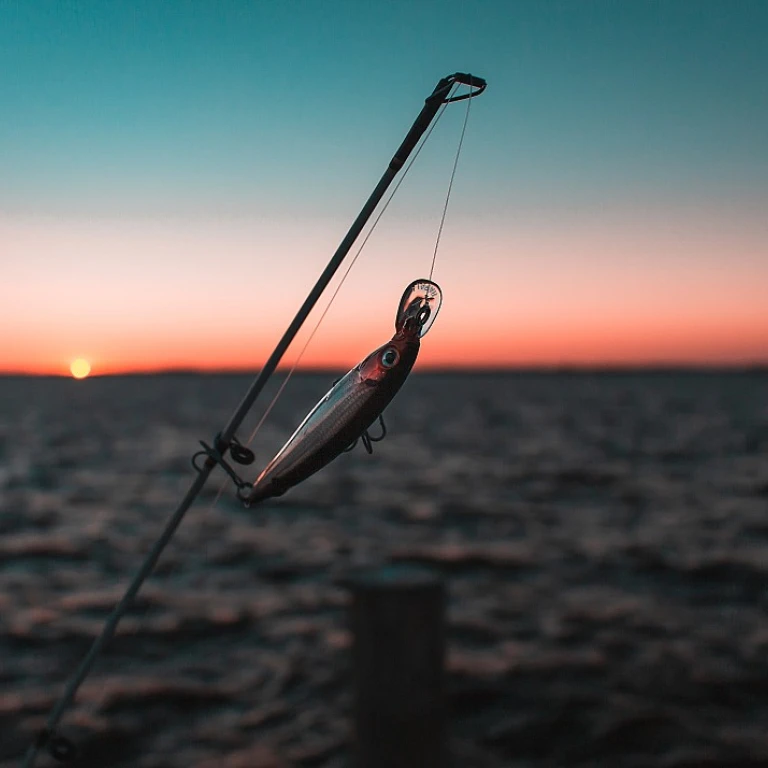

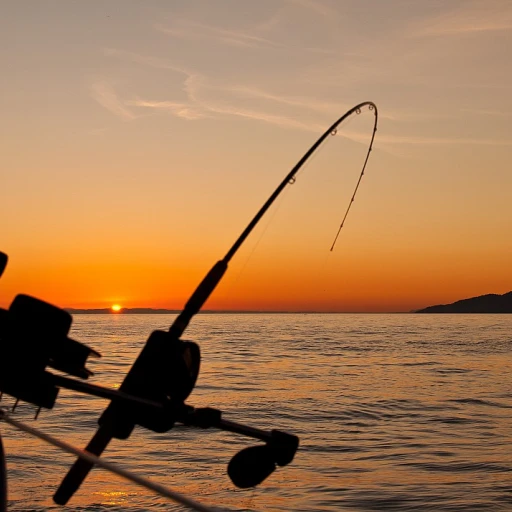

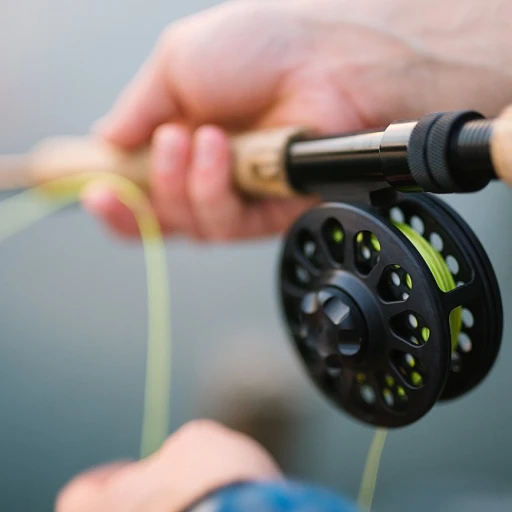
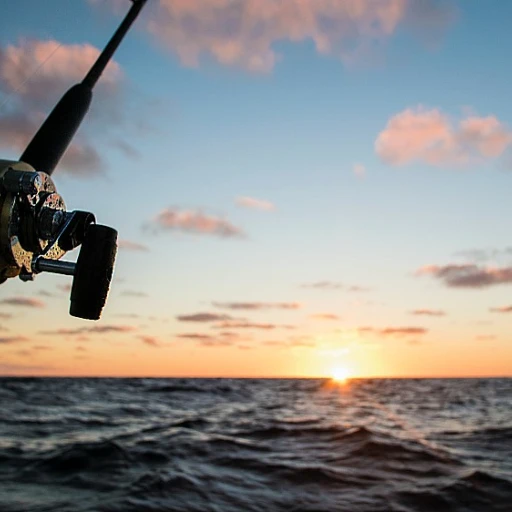
-large-teaser.webp)
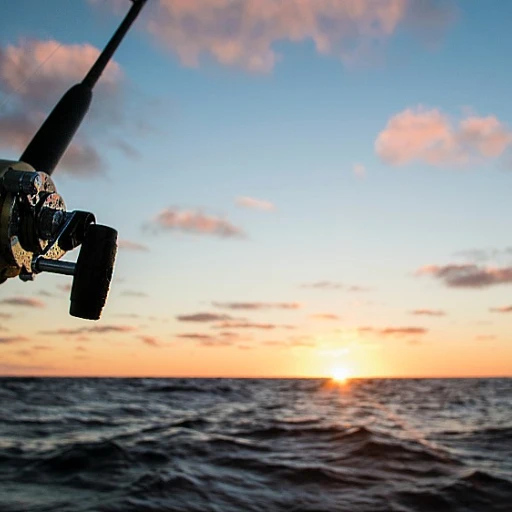
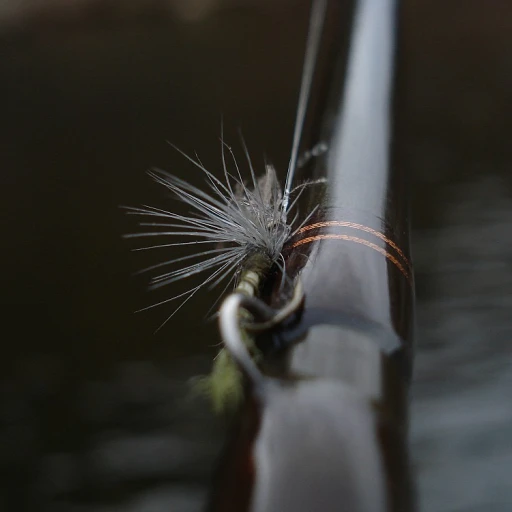

-large-teaser.webp)
